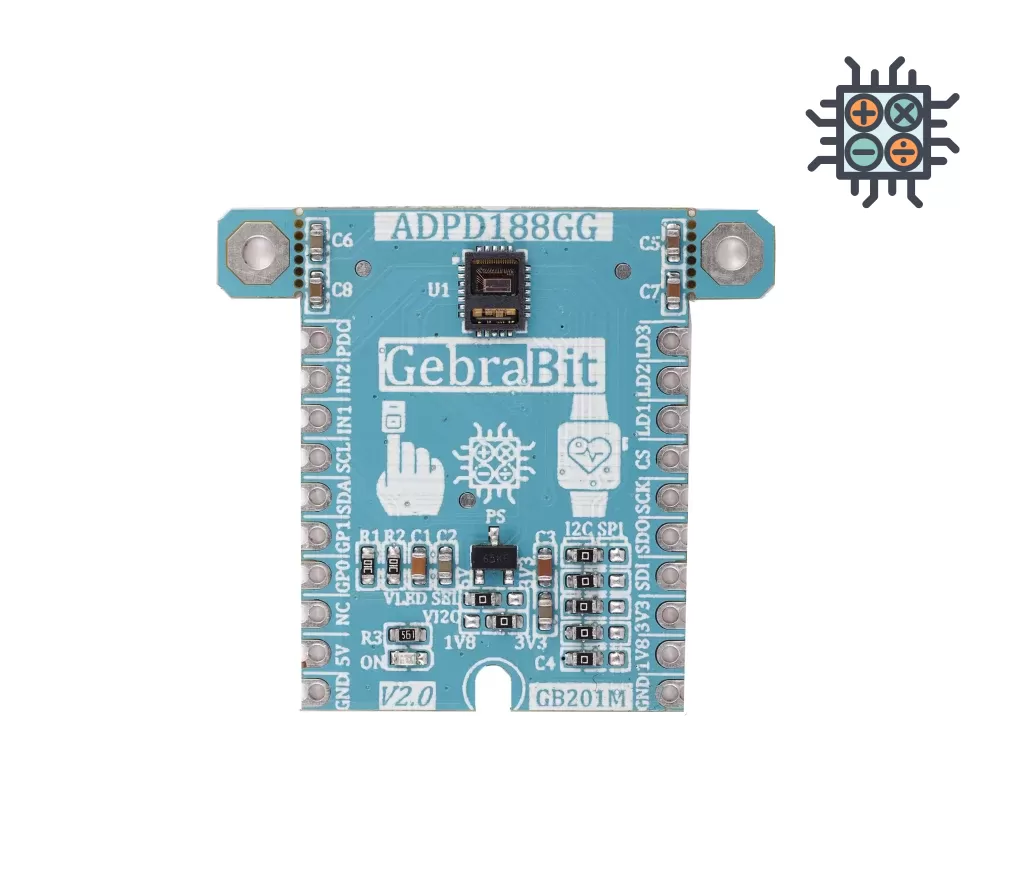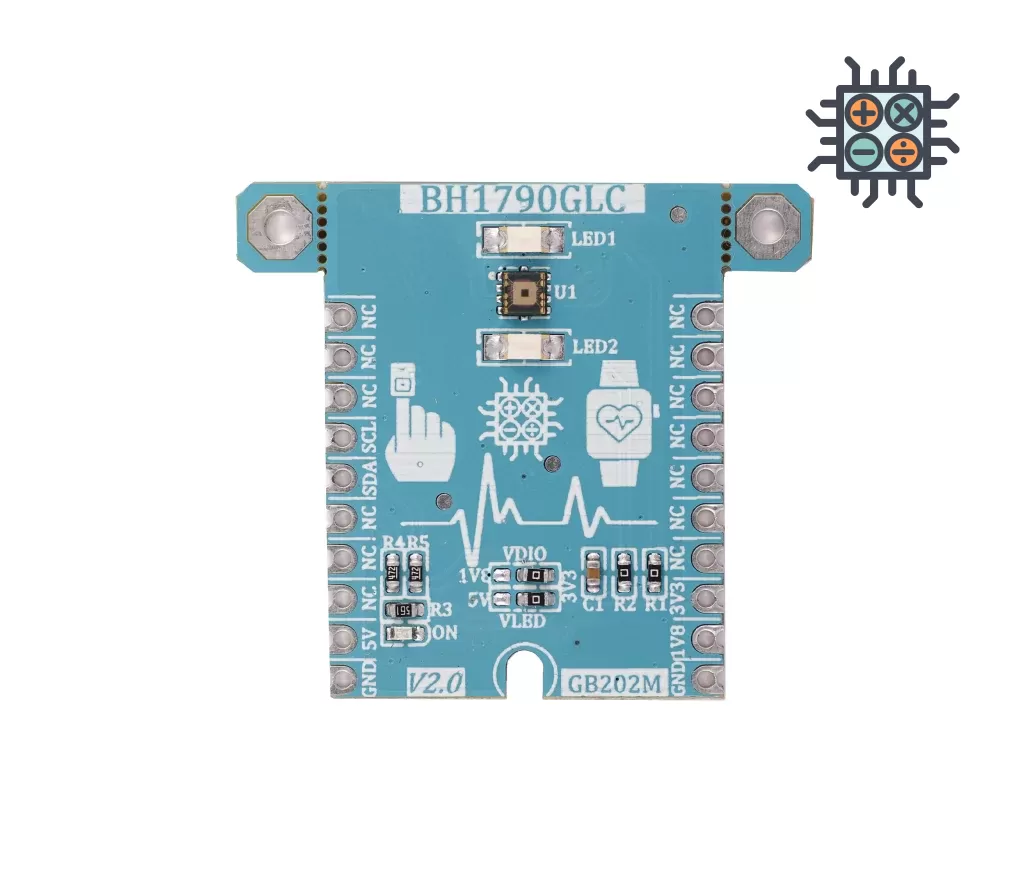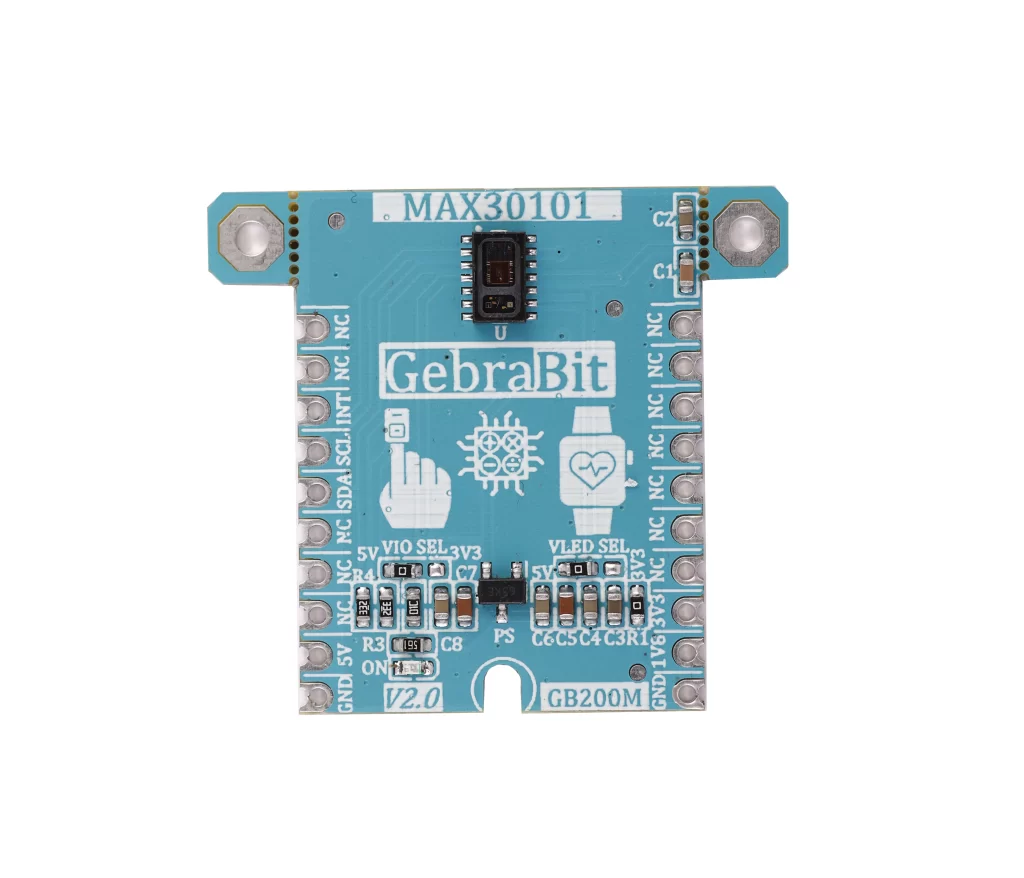Medical
Pulse Oximeter
Monitoring a person’s oxygen saturation


GebrabitPulse Oximetermodule
A pulse oximeter is a medical device that is used to measure the oxygen saturation level (SpO2) and pulse rate of a person. It is a small, non-invasive device that can be attached to a person’s fingertip, toe, or earlobe.
The pulse oximeter works by emitting two wavelengths of light, typically red and infrared, through the skin and measuring the amount of light that is absorbed by the blood. Oxygenated blood absorbs more infrared light and allows more red light to pass through, while deoxygenated blood absorbs more red light and allows more infrared light to pass through. The pulse oximeter then calculates the SpO2 level based on the ratio of absorbed light to unabsorbed light.
In addition to measuring oxygen saturation levels, many pulse oximeters also measure the person’s pulse rate, which is the number of times the heart beats per minute. This is done by detecting the variations in blood volume that occur with each heartbeat.
Pulse oximeters are commonly used in medical settings, such as hospitals and clinics, to monitor the oxygen saturation levels of patients with respiratory or cardiovascular conditions. They are also used in home health care settings for patients who require supplemental oxygen therapy or who have conditions that affect their oxygen saturation levels.
Frequently Asked Questions
What is normal pulse oximeter?
The normal pulse oximeter reading for a healthy individual is typically between 95-100%. This means that the oxygen saturation level in their blood is at least 95%, which is considered to be within the normal range.
However, it is important to note that the normal range may vary depending on a person’s age, health status, and any underlying medical conditions they may have. For example, some people with chronic obstructive pulmonary disease (COPD) or other respiratory conditions may have lower baseline oxygen saturation levels, and their normal range may be closer to 90-95%.
In general, if a person’s oxygen saturation level falls below 90%, it may be a sign of hypoxemia, which is a condition where the body does not receive enough oxygen. This can be a serious medical issue that requires immediate attention and treatment.
It is important to note that pulse oximeters are not a substitute for medical evaluation and should be used in conjunction with other diagnostic tools and clinical assessments. If you have any concerns about your oxygen saturation levels or overall health, you should consult a healthcare professional.
What are the symptoms of low oxygen levels?
Low oxygen levels in the body, also known as hypoxemia, can cause a variety of symptoms. Some of the common signs of low oxygen include:
- Shortness of breath or difficulty breathing
- Rapid breathing or increased heart rate
- Feeling tired or fatigued
- Headaches or dizziness
- Confusion or difficulty concentrating
- Cyanosis, which is a bluish tint to the skin, lips, or nail beds
- Chest pain or tightness
- Wheezing or coughing
These symptoms can vary depending on the severity and cause of the hypoxemia. In some cases, low oxygen levels can be a sign of a medical emergency and require immediate medical attention.
If you or someone you know is experiencing any of these symptoms or has concerns about their oxygen levels, it is important to seek medical attention promptly.
What is the normal oxygen level by age?
The normal oxygen saturation level for a healthy individual is typically between 95-100%. However, oxygen saturation levels may vary depending on a person’s age, health status, and any underlying medical conditions they may have.
Here are some approximate normal oxygen saturation levels by age:
- Newborns: 95-99%
- Infants: 95-99%
- Children: 95-99%
- Adults: 95-100%
It is important to note that these are general guidelines and may vary depending on the individual. Factors such as altitude, exercise, and certain medical conditions can also affect oxygen saturation levels.
If you have concerns about your oxygen levels or overall health, it is important to consult with a healthcare professional. They can perform a physical examination and order tests if necessary to determine your oxygen saturation levels and any underlying medical conditions.



